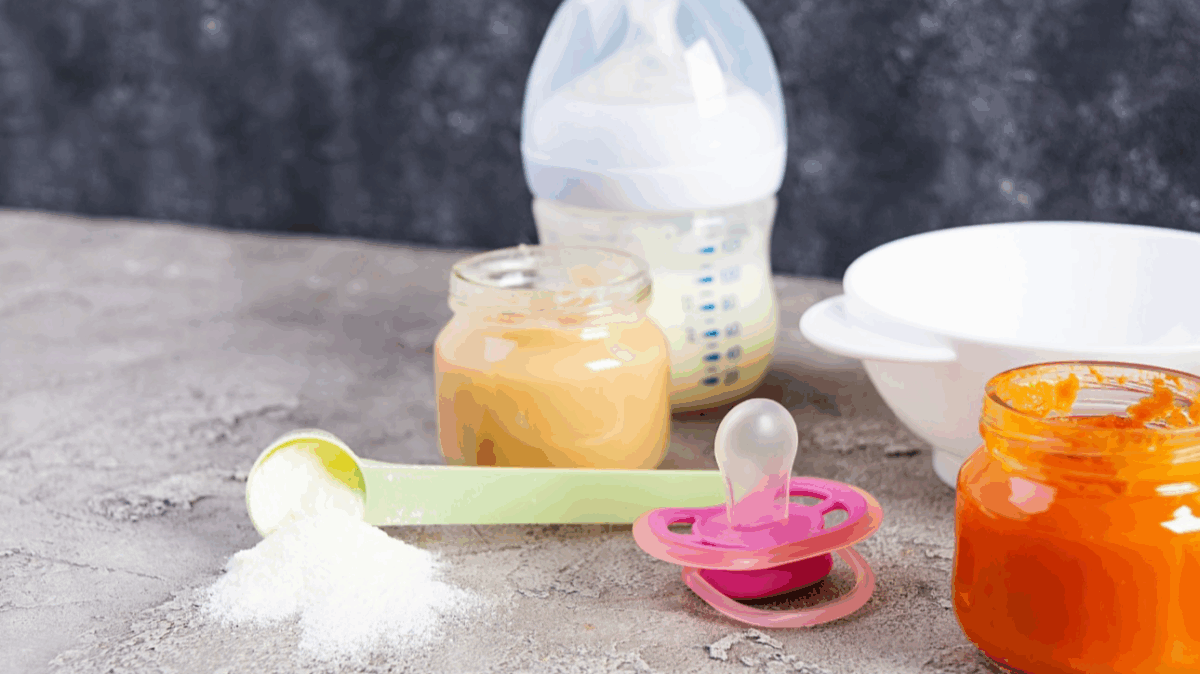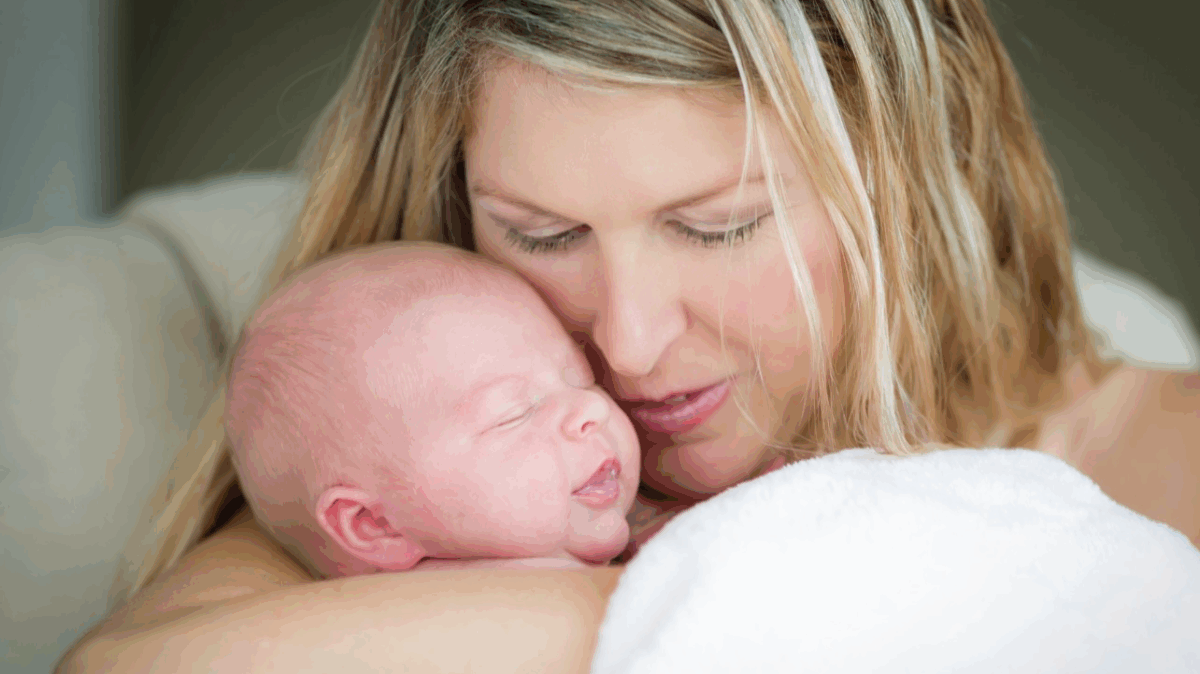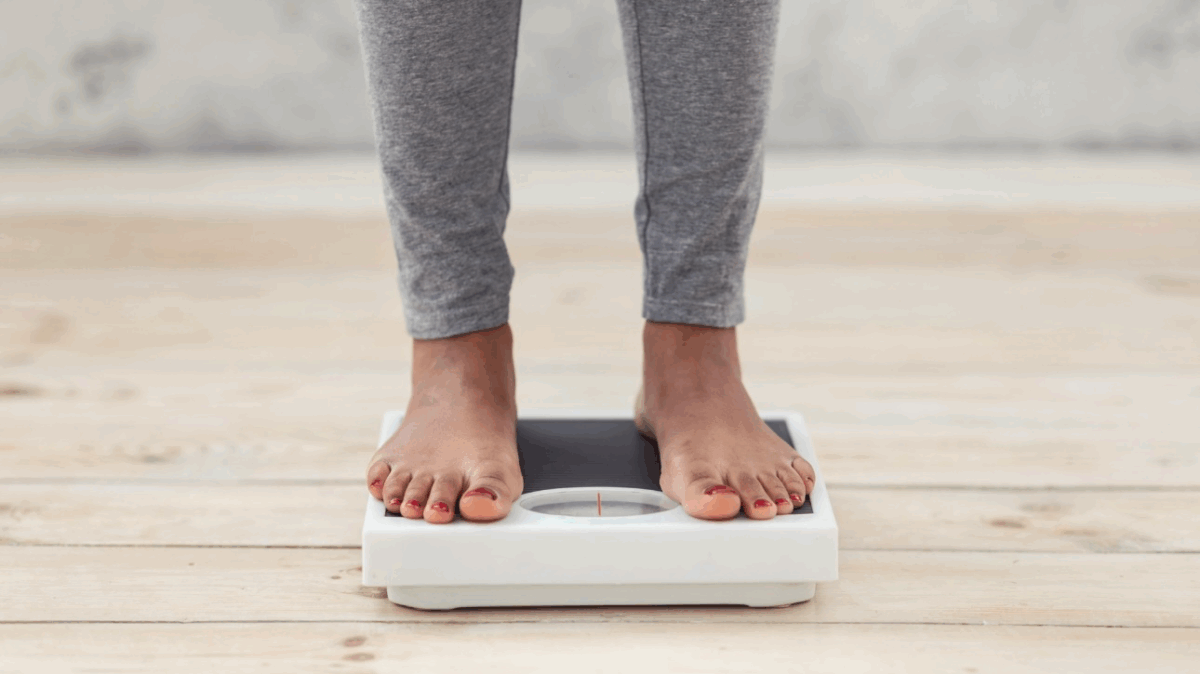Month: May 2025
Formula Without Shame: Why Fed Is Always Best

The phrase “breast is best” has echoed through parenting circles, hospital posters, and online forums for decades. And while breastfeeding has many benefits, the truth is: it’s not the best — or even possible — for everyone.
Whether you’ve chosen to formula feed from day one, needed to supplement, or made the switch after struggling with supply, pain, or mental health, one truth stands:
Fed is best. Period.
It’s time we stopped shaming formula-feeding parents and started supporting all feeding journeys — because the goal isn’t perfection. The goal is a healthy, nourished, and loved baby — and a thriving mother.
Why Parents Choose Formula (And It’s Not “Giving Up”)
There are dozens of reasons a parent may use formula — and none of them require justification. Let’s name a few:
• Low or no milk supply
• Painful latch, cracked nipples, or trauma from birth
• Baby’s tongue tie or latch issues
• Needing to return to work
• Mental health support (postnatal anxiety or depression)
• Wanting partner involvement in feeding
• Adoption or surrogacy
• Single parenting
• Simply choosing it because it’s right for you
Choosing formula is not a failure — it’s a feeding decision. And every parent deserves to make that choice without shame.
The Science: Is Formula “Less Than”?
Not anymore.
Modern formulas are:
• Designed to closely mimic breast milk
• Nutritionally complete
• Fortified with iron, vitamin D, and DHA for brain development
• Rigorously tested for safety and quality
Yes, breast milk has immunological benefits. But formula-fed babies still grow, thrive, bond, and hit milestones just like breastfed ones.
And spoiler alert: Most babies in the world are combo-fed or formula-fed at some point. You’re not alone.
Mental Health > Martyrdom
Breastfeeding can be beautiful. It can also be deeply difficult.
If nursing leads to:
• Anxiety or panic attacks
• Rage, resentment, or exhaustion
• Isolation or intrusive thoughts
• Deep physical pain
• A sense of losing yourself
Then stopping — or never starting — may be exactly what you and your baby need.
A mother who is rested, supported, and emotionally well is the most important foundation a baby can have.
Formula Feeding Without the Guilt Trip
Let’s get clear on what formula feeding doesn’t mean:
• It doesn’t mean you’re selfish
• It doesn’t mean you didn’t try
• It doesn’t mean you don’t care about bonding
• It doesn’t mean you’re “less than” as a mother
What it does mean: You are feeding your baby. You are showing up. You are doing your best.
That’s more than enough.
Tips for Confident Formula Feeding
1. Choose the Right Formula for Your Baby
• Cow’s milk-based is the most common
• Goat’s milk, soy, or hypoallergenic options available
• Talk to your pediatrician if baby has gas, reflux, or sensitivities
• Stick to one type for at least 5–7 days before switching unless advised
2. Prep Bottles Safely
• Sterilize bottles before first use
• Use boiled and cooled water (or sterile water if recommended)
• Don’t reheat old bottles — make fresh or refrigerate properly
• Discard any formula left out for over an hour
3. Make Night Feeds Easier
• Pre-measure powder in containers
• Use a formula dispenser or bottle-making machine
• Keep supplies near your bed
• Share feeds with a partner or support person if possible
4. Focus on Bonding
Feeding isn’t just about nutrition — it’s connection too.
• Make eye contact
• Talk or sing while feeding
• Practice skin-to-skin contact during bottle feeds
• Respond to hunger and fullness cues (don’t force-feed)
For the Combo-Feeders & Transitioning Mamas
Maybe you’re nursing and using formula. Or you’re weaning slowly. That’s normal.
Combo-feeding is not confusing. Babies adjust. And it allows flexibility, rest, and shared caregiving.
You don’t need to pick a side — only what works for your family.
Dealing With Judgement (From Family, Friends, or Online)
Sadly, feeding choices still come with opinions. Here’s how to respond:
• “This is what works best for us right now.”
• “I’m confident in my decision — thanks for understanding.”
• “We’re focusing on a fed and happy baby — and a healthy mum.”
• “Breast isn’t best for everyone — but fed always is.”
You owe no one a breakdown of your baby’s bottle.
Final Thoughts
Let’s retire the guilt. Let’s toss the “failed breastfeeding” language. Let’s celebrate parents who love their babies fiercely — however they feed them.
Because in the end, it’s not about the source of the milk.
It’s about the love, intention, and care behind every feed.
Egg Freezing in Your 30s: Smart Move or Pressure Play?

You’ve seen the headlines. You’ve heard the buzz. Egg freezing is being hailed as the ultimate modern solution to “have it all.” Fertility clinics advertise it like insurance for your future self. Celebrities talk about it like it’s a wellness hack.
But behind the hashtags and clinic packages, women are asking the real questions:
Is freezing my eggs empowering — or just another pressure point?
Am I preserving choice, or postponing the inevitable?
If you’re in your 30s and wondering whether egg freezing is your next smart move or just another expensive “just in case,” this is the guide that breaks it all down — with science, stats, and no sugar-coating.
What Is Egg Freezing, Really?
Egg freezing — medically called oocyte cryopreservation — is the process of retrieving your eggs, freezing them unfertilized, and storing them for potential use in the future.
It was once only available for women facing medical treatments (like chemotherapy) that could affect fertility. Now, elective egg freezing is common for lifestyle, career, or personal choice.
Here’s How It Works (Step-by-Step)
1. Hormone Stimulation
• You inject daily hormones (for 8–12 days) to stimulate your ovaries to produce multiple mature eggs.
2. Monitoring & Bloodwork
• You’ll have ultrasounds and blood tests to track your response and timing.
3. Egg Retrieval (Under Sedation)
• A fertility doctor extracts your mature eggs via a needle through the vaginal wall — done under light anesthesia.
4. Cryopreservation
• Viable eggs are frozen using a method called vitrification, which prevents ice crystal damage.
5. Storage
• Eggs are stored in liquid nitrogen tanks until you’re ready to use them — which may be years later.
When’s the Best Time to Freeze Your Eggs?
Here’s the cold, hard science:
• Best time: Late 20s to early 30s
• Most common time: Age 34–38
• Egg quality begins declining around 35
• Success rates with frozen eggs drop significantly after age 38
But let’s be real: Most women don’t feel the financial freedom or life clarity to freeze eggs in their 20s. And many don’t start thinking seriously about it until their mid-30s.
The sweet spot?
Age 30–35 — when egg quality is still solid and life planning becomes more urgent.
How Much Does Egg Freezing Cost?
Let’s talk numbers — because this isn’t cheap.
• Stimulation + retrieval: $5,000–$10,000 AUD per cycle
• Medication costs: $2,000–$5,000
• Annual storage: $500–$1000
• Future IVF costs (to use eggs): $10,000+ per round
Most women need 1–2 cycles to retrieve enough eggs (15–20+ is ideal). And most private insurance does not cover elective egg freezing in Australia or the U.S.
Success Rates: What Are Your Chances, Really?
Let’s say you freeze 15 eggs at age 33.
Here’s your estimated chance of a live birth later:
• 1 egg: 4–6%
• 15 eggs: ~60–70% chance of at least one baby
• 20 eggs: ~80% chance
These are averages. Age at freezing is everything.
Freezing eggs doesn’t guarantee a baby — but it improves your odds later, especially if fertility declines or circumstances change.
Is Egg Freezing Empowering or Pressuring?
The Case for Empowerment:
• Gives you time and options
• Frees you from the “biological clock panic”
• Can reduce dating pressure
• Supports women prioritizing health, healing, or career
The Pressure Side:
• Marketed as a “must” or risk “regret”
• Clinics profit from your fear of aging out
• Can feel like another task women must take on alone
• Emotional toll if results don’t match expectations
Some women freeze and feel empowered. Others freeze and feel grief. Both are valid.
What It Really Feels Like (Emotionally + Physically)
• Hormone injections can cause bloating, mood swings, headaches, and fatigue.
• Retrieval is minor surgery — but recovery is usually fast (1–3 days).
• Emotionally, it’s a rollercoaster — even when it’s your choice.
You may feel:
• Relieved to “have a plan”
• Angry you’re doing this alone
• Hopeful, sad, proud, overwhelmed — often all at once
You’re not alone. Many women feel torn between gratitude for the option… and resentment that it feels necessary.
Questions to Ask Before You Freeze
1. Why am I considering this? (Pressure vs. desire)
2. Can I afford this without financial strain?
3. What are my actual chances based on age and health?
4. What’s my plan if I never use these eggs?
5. How will I feel emotionally — now and later?
Real Talk: Egg Freezing Is a Tool — Not a Guarantee
It’s not a promise. It’s not a failure. It’s not a moral decision.
Egg freezing is one option in the reproductive toolkit — and it’s okay to want it, reject it, or feel unsure.
Whether you freeze or not, your worth isn’t measured by eggs, plans, or babies.
You’re allowed to choose your own timeline — and define motherhood, womanhood, or legacy on your own terms.
Solo Parenting a Newborn: The First 6 Weeks Without a Village

Everyone says “it takes a village.” But what if you don’t have one?
Whether you’re a single mother by choice, navigating postpartum without local family, or simply doing most of it solo while your partner works, the first six weeks with a newborn can feel overwhelming, isolating — and surprisingly powerful.
This is your guide to solo parenting through the newborn phase. No fluff, no pressure — just real strategies, emotional check-ins, and the reminder that you’ve got this.
Week 1: Survive Mode (And That’s Enough)
You just gave birth. You’re bleeding, leaking, and running on adrenaline. And now — you’re responsible for this tiny, hungry, unpredictable human.
Here’s what matters right now:
• Feed the baby (breast, bottle, combo — all valid)
• Stay hydrated and snack constantly
• Sleep whenever the baby sleeps (yes, even at 10 a.m.)
• Say yes to any help, even if it’s just a neighbor dropping groceries
• Don’t worry about routines — your only job is survival
Pro tip: Set up a “nest” — everything within arm’s reach: diapers, wipes, snacks, charger, remote, water bottle, burp cloths.
Week 2–3: Hello Hormones, Hello Exhaustion
The emotional wave hits. You may cry over nothing. You may miss your old life. You may stare at your baby and feel disconnected — or too connected.
Totally normal.
Emotional tips:
• Journal or voice note your thoughts (you’ll be amazed looking back)
• Call someone you trust — or text if talking feels like too much
• Don’t compare yourself to other mums
• Accept that some days will feel like chaos
Feeding tip: Track feeds with a simple phone note. Patterns may start emerging, and you’ll feel more in control.
Week 4: Finding Your Rhythm (Kinda)
You’re getting the hang of it — sort of. Maybe baby gives you a 3-hour stretch of sleep. Maybe you’ve figured out the best time to shower (while they nap on your chest).
Hacks that help:
• Use a baby wrap or carrier — hands-free = sanity
• Cook once, eat twice (or prep snacks, not meals)
• Accept that background noise and unwashed hair are the vibe
• Introduce a “sleep station” in every room (bassinet, blankets, wipes)
Remember: there’s no gold star for doing it all. If the dishes stay dirty but baby is fed, you’ve won.
Week 5–6: Tired but Stronger
You’re still exhausted, but the fog might be lifting just a bit. Your baby might smile. You might laugh. You might even have a moment where you think, “I’m doing this.”
Things that change now:
• You can distinguish baby’s cries better
• Sleep stretches might improve (even if only slightly)
• Your confidence grows with every day
• You might crave adult conversation again (don’t ignore that)
It’s okay to want more support — but also to be proud that you’re making it work.
How to Cope When You’re the Only One in the Room
1. Automate Where You Can
• Grocery delivery
• Auto-pay bills
• Subscription diapers or wipes
• Meal boxes or frozen staples
2. Prioritize Rest Over Housework
If it’s between dishes and sleep — sleep wins. Always.
3. Create a Virtual Village
• Text chains with other mums
• Audio check-ins with family
• FaceTime “visits” with friends
• Join a supportive online group or app (search local communities)
Connection counts — even through a screen.
Feeding and Soothing Without Backup
You can do it — but it’s okay to cry while doing it.
Soothing tips:
• Use white noise
• Bounce gently on a birth ball or rocking chair
• Try the “5 S’s”: Swaddle, Side/stomach position, Shush, Swing, Suck
• Take breaks when baby is safe in the bassinet
If you’re bottle feeding or pumping:
• Use a hands-free pumping bra
• Try side-lying feeding while resting
• Keep water and snacks near every feeding area.
Mental Health: Watch Your Inner Voice
Solo parenting can feel isolating, but you are not failing.
Check in with yourself:
• Am I eating today?
• Did I step outside for 5 minutes?
• Who can I message for a quick voice note or meme?
• Do I feel numb, angry, or disconnected most of the day?
If the answer is yes — please talk to a professional. Postpartum support is for every mother, not just partnered ones.
Affirmations for Solo Mamas
• “I’m doing enough, even when it doesn’t feel like it.”
• “My baby doesn’t need perfect. My presence is powerful.”
• “This phase is hard — and temporary.”
• “Every small act of care I give matters deeply.”
• “I am not alone — even when I’m solo.”
Final Thoughts
Solo parenting a newborn isn’t for the faint of heart — it’s for the fierce, the tender, the raw, and the deeply human.
If no one’s told you lately: You’re doing an incredible job. You are seen. You are capable. And your baby is lucky to have you.
This season will stretch you — but it will also shape you into someone stronger than you ever imagined.
How to Choose a Surrogate (And What to Look For Beyond the Profile)

Finding the right surrogate is more than ticking boxes on a checklist — it’s about trust, alignment, and intuition. Whether you’re a hopeful parent navigating infertility, a same-sex couple starting your family, or choosing surrogacy after a medical complication, one of the biggest decisions you’ll ever make is who will carry your baby.
And while agencies offer medical reports, background checks, and polished profiles, the truth is — the real connection is emotional and personal.
Here’s how to choose a surrogate with confidence — not just based on charts, but on values, communication, and the kind of partnership that makes this sacred journey possible.
First, Understand the Role of a Surrogate
There are two main types of surrogates:
1. Gestational Surrogate (Most Common)
• No biological connection to the baby
• An embryo is created via IVF using donor or intended parent(s)’ sperm and egg
• The surrogate is the carrier only, not the genetic mother
2. Traditional Surrogate (Less Common)
• Uses her own egg, making her biologically related to the child
• Typically achieved through artificial insemination (not IVF)
• Legal and emotional complexities are higher
Most agencies and intended parents choose gestational surrogacy for clarity and legal security.
Where Do You Find a Surrogate?
You can choose to:
• Work with a surrogacy agency — they match you with vetted candidates
• Go independent — you find a surrogate through your network or online
• Ask a friend or family member (called altruistic surrogacy in some countries)
Agencies often offer added legal, medical, and logistical support — but always verify reputation, costs, and inclusivity.
What to Look for in a Surrogate (Beyond the Basics)
The profile might list age, BMI, previous pregnancies, and medical history — and yes, those are important. But here’s what really matters when choosing your surrogate:
1. Communication Style
• Do you want regular updates? Monthly check-ins? Casual texts?
• Does she feel open, respectful, and emotionally attuned?
• Can you navigate tough conversations together?
This journey requires honest, ongoing communication — choose someone you feel safe talking to.
2. Shared Values
• What are her views on selective reduction or termination (if medically necessary)?
• Does she share similar beliefs about birth preferences or medical interventions?
• How does she feel about open vs closed relationships post-birth?
Alignment now avoids emotional conflict later.
3. Emotional Stability
Pregnancy is intense — physically and emotionally. Surrogates should:
• Be in a stable life situation
• Have strong support networks
• Feel confident in their motivation to carry for someone else
Most reputable agencies perform psychological evaluations — but trust your gut, too.
4. Motivation for Becoming a Surrogate
The best surrogates often say:
“I loved being pregnant — and I want to help someone else become a parent.”
That motivation is gold. Ask her why she chose surrogacy — and listen beyond the words.
5. Experience with Pregnancy
Ideally, your surrogate has:
• Carried at least one child to term
• Had low-risk pregnancies
• Fully recovered emotionally and physically
Some surrogates are doing this for the second or third time — which can be a huge plus.
6. Boundaries & Independence
A strong surrogate will:
• Respect your role as the parent(s)
• Follow medical guidelines
• Maintain her personal autonomy
• Set healthy boundaries with love
You want a partner — not someone looking to be “rescued” or controlled.
Questions to Ask During the Surrogate Interview
Whether via Zoom or in-person, come prepared. Try:
• “How did you decide to become a surrogate?”
• “What are your expectations during the pregnancy?”
• “How do you feel about intended parent involvement?”
• “What support system do you have in place?”
• “How would you like our relationship to feel?”
• “What’s your birth philosophy or experience been like before?”
And most importantly: Can we do this together with mutual respect and heart?
Red Flags to Watch For
• Pressured timelines or rushing into the match
• Discomfort discussing hard topics (termination, health decisions)
• Lack of support at home
• History of complications not disclosed upfront
• Financial desperation as a primary motivator
Pause, reflect, and consult your surrogacy team if anything feels off.
Your Rights (and Hers) Matter
You have the right to:
• Choose who carries your child
• Ask questions and set clear expectations
• Receive medical updates and be present for the birth (when permitted)
She has the right to:
• Be treated with dignity and autonomy
• Make decisions about her own body
• Receive compensation and medical care as outlined in your agreement
This is a shared journey — not a transaction.
Legal Considerations
Before moving forward:
• Hire a lawyer who specializes in reproductive law
• Draft a detailed surrogacy agreement
• Discuss rights to the baby, medical consent, and future contact
• Follow local laws — surrogacy legality varies by country and state
Even with the best connection, protect everyone with strong legal groundwork.
Final Thoughts
Choosing a surrogate is a heart decision wrapped in legal, medical, and emotional layers. Go slow. Trust your intuition. And know that the right match will feel less like a transaction and more like a team.
You’re not just choosing someone to carry your baby — you’re inviting someone into one of the most intimate and transformational chapters of your life.
Choose connection. Choose trust. Choose love.
The Ultimate Fertility-Boosting Grocery List (Backed by Science)

Fertility isn’t just about timing or luck — it’s about nourishing your body to function at its best. Whether you’re trying naturally, prepping for IVF, managing PCOS, or just syncing with your cycle, what’s on your plate can make a serious impact.
But forget the trends and “miracle foods” — this is your real-talk, research-backed fertility grocery guide. Built for women, partners, and anyone supporting their reproductive journey.
Why Food Matters for Fertility
Your reproductive system is deeply connected to your:
• Blood sugar regulation
• Hormonal rhythms
• Inflammation levels
• Gut health
• Egg and sperm quality
• Ovulation and cycle regularity
Fertility-supportive foods reduce oxidative stress, support hormone production, and create a nourishing environment for conception — whether naturally or with medical help.
Fertility-Boosting Grocery Staples (And Why They Work)
1. Leafy Greens (Spinach, Kale, Swiss Chard, Rocket)
• Rich in folate, magnesium, and antioxidants
• Supports egg development and hormone balance
• Bonus: Helps the body detox excess estrogen
Add to: Smoothies, salads, soups, egg muffins
2. Berries (Blueberries, Raspberries, Strawberries, Acai)
• Packed with antioxidants to protect eggs and sperm
• Anti-inflammatory and low glycemic
Snack on: Fresh or frozen, in yogurt, oats, or trail mix
3. Whole Grains (Quinoa, Buckwheat, Oats, Brown Rice)
• Stabilize blood sugar
• Provide fiber to support estrogen detox
• Contain B vitamins for ovulation support
Swap for: Refined carbs and white bread
4. Healthy Fats (Avocado, Olive Oil, Flaxseeds, Walnuts)
• Boost hormone production (your body needs cholesterol to make estrogen + progesterone)
• Reduce inflammation
• Improve cervical mucus quality
Use: As dressings, in smoothies, or sprinkled on salads
5. Lean Protein (Eggs, Chicken, Grass-Fed Beef, Tempeh, Tofu)
• Builds hormones and supports cellular repair
• Eggs contain choline, vital for fetal brain development
• Plant-based proteins also lower estrogen dominance
Aim for: 20–30g of protein per meal
6. Full-Fat Dairy (Greek Yogurt, Cottage Cheese, Milk)
• Studies show full-fat dairy may support ovulation in some women
• Calcium + vitamin D = stronger follicles and uterine health
If sensitive to dairy: Try sheep or goat milk alternatives
7. Omega-3s (Salmon, Sardines, Chia, Hemp, Flaxseeds)
• Anti-inflammatory
• Improves blood flow to reproductive organs
• Supports embryo implantation
Tip: Wild-caught, low-mercury fish 2–3x/week
8. Iron-Rich Foods (Lentils, Pumpkin Seeds, Beef, Spinach, Molasses)
• Low iron is linked to anovulation
• Iron is essential for egg quality and oxygen delivery
Pair with vitamin C (like lemon or capsicum) to increase absorption
9. Brazil Nuts (or Selenium-Rich Foods)
• 1–2 Brazil nuts per day give your full daily dose of selenium
• Protects egg and sperm DNA
• Supports thyroid function (key for fertility)
10. Beets and Carrots
• Improve liver detox and estrogen metabolism
• Beets support uterine blood flow
• Carrots bind excess estrogen and help eliminate it
Try: Roasted veggies, beet hummus, raw carrot salad
Bonus Fertility Pantry List
Stock these for easy meal prep:
• Organic canned beans (black beans, chickpeas, lentils)
• Apple cider vinegar (supports gut + insulin balance)
• Raw nuts and seeds (snacks + hormone support)
• Coconut milk or cream (healthy fat for cooking)
• Bone broth or veggie broth (gut and uterine lining support)
• Dark chocolate (antioxidants + pleasure = yes please)
Fertility No-Gos (Or Limit Gently)
You don’t need to be perfect, but reducing these may support hormonal clarity:
• Refined sugar and processed snacks
• Trans fats and highly processed oils
• Caffeine (keep it under 200mg/day if TTC)
• Alcohol (especially during your luteal phase or fertility treatment)
• Low-calorie crash diets — your body needs nourishment to ovulate
Partner Nutrition Matters Too
Sperm health is half the story — so include your partner in the fertility grocery journey.
Top nutrients for him:
• Zinc (pumpkin seeds, beef, cashews)
• CoQ10 (salmon, spinach, supplements)
• Folate (leafy greens)
• Vitamin E (avocados, sunflower seeds)
• Selenium (Brazil nuts, mushrooms)
Support each other — and shop together.
Cycle Sync Your Grocery List
If you want to get next-level:
• Follicular phase (after period): Focus on light, fresh foods + liver support
• Ovulation phase: Hydrating foods + antioxidant-rich berries
• Luteal phase: Warm, grounding foods + magnesium (sweet potato, dark chocolate)
• Menstrual phase: Iron-rich meals + soups and broths
Final Thoughts
Your fertility journey deserves nourishment, not deprivation. This isn’t about fad diets or pressure — it’s about fueling your body with intention.
Let your grocery list reflect the love you’re giving your future family. One choice at a time
Menopause Skin Changes Are Real — Here’s How to Glow Through It

One day your skin is smooth and glowing — the next, it’s suddenly dry, irritated, and breaking out like it’s 2003. Welcome to menopause skin, where hormonal shifts create new textures, tones, and challenges you didn’t see coming.
But here’s the truth: just because your hormones are changing, doesn’t mean you can’t glow. With the right care, you can support your skin from the inside out and thrive through this powerful midlife transition.
Let’s break down what’s really going on — and what actually works.
What Happens to Your Skin During Menopause
As estrogen levels decline during perimenopause and menopause, your skin loses key components that keep it plump, hydrated, and resilient.
Major changes include:
- Collagen loss (up to 30% in the first 5 years post-menopause)
- Reduced skin elasticity
- Dryness and itching
- Thinning of the skin
- Slower wound healing
- Increased sensitivity or redness
- Hormonal breakouts (yes, really)
- Hyperpigmentation or uneven tone
Estrogen helps regulate moisture, oil production, and barrier protection — so when it drops, your skin starts acting very differently.
Is It Perimenopause or Menopause?
Most skin changes start during perimenopause, which can begin as early as your late 30s or early 40s.
Signs your skin might be shifting hormonally:
- Products you once loved now irritate your skin
- You’re drier and more breakout-prone
- Your glow feels like it’s disappeared overnight
- Your skin bruises or creases more easily
- Makeup doesn’t sit the same way it used to
These aren’t random — they’re hormone signals. And they’re totally valid.
How to Support Menopausal Skin (Without Buying Every Serum)
Let’s get to the glow-up strategies — science-backed, hormone-smart, and actually doable.
1. Ditch the Stripping Cleansers
Say goodbye to foaming, alcohol-based cleansers. Swap in:
- Cream or oil cleansers that hydrate while they clean
- Micellar water for sensitive skin days
- Low-pH formulas to preserve your skin barrier
Less foam = more hydration.
2. Bring in the Hydration Powerhouses
Layering is key. Your skin needs moisture AND barrier repair.
- Hyaluronic acid: Attracts water into the skin
- Ceramides: Rebuilds skin’s protective layer
- Squalane: Mimics skin’s natural oils
- Niacinamide: Calms irritation and supports elasticity
Pro tip: Apply hydrating serums on damp skin, then seal with a rich moisturizer.
3. Collagen Support (Topical & Internal)
Your body’s natural collagen production dips sharply during menopause.
Support it with:
- Peptides in serums
- Vitamin C (both topical and in your diet)
- Marine or bovine collagen powder (check quality)
- Retinoids (if tolerated — go slow and moisturize after)
Don’t expect overnight results — collagen rebuilds take time, but consistency pays off.
4. SPF Is Non-Negotiable
Sun damage speeds up aging, increases pigmentation, and weakens already-sensitive skin.
Daily use of broad-spectrum SPF 30+:
- Prevents fine lines
- Reduces age spots
- Protects thinning skin from further breakdown
Even if you’re indoors — UVA rays still come through windows.
5. Focus on Anti-Inflammatory Nutrition
What you eat shows up in your skin. Support hormone balance and glow with:
- Omega-3s (salmon, chia seeds, walnuts)
- Antioxidants (berries, leafy greens, matcha)
- Hydration (water + electrolytes)
- Protein (for skin repair and collagen production)
Limit processed sugar, alcohol, and ultra-processed foods — they spike inflammation and worsen skin issues.
6. Sleep Like Your Skin Depends on It (Because It Does)
During sleep, your skin goes into repair mode. Aim for 7–9 hours and support deep rest with:
- Magnesium
- Chamomile or reishi tea
- Blue-light blocking after 7 PM
- Evening wind-down ritual (cleanser, serum, breathe)
7. Know When to Ask for Help
Dermatologists and hormone-literate practitioners can support menopausal skin with:
- Prescription retinoids or hormone-safe skincare
- HRT (hormone replacement therapy), which may improve skin texture
- Microneedling, PRP facials, or radiofrequency for collagen regeneration
You’re not being vain — your skin is your body’s largest organ. You deserve support.
Real Talk: This Is Not About “Anti-Aging”
Let’s ditch that phrase for good. You’re not fighting age — you’re supporting your skin through a natural transition.
This is about:
- Feeling confident in your skin
- Embracing change with knowledge
- Giving your body what it needs — not punishing it
You’re not aging out of beauty. You’re growing into a new glow.
Final Thoughts
Menopause doesn’t mean giving up on vibrant skin — it means learning how to care for it differently.
With the right tools, nourishment, and mindset, you can feel radiant in your skin — not despite the changes, but because of them.
You earned this stage. Let your skin reflect your strength, not your stress.
What No One Tells You About Postpartum Recovery After a C-Section

You prepared for the birth. You read the books. You packed the hospital bag. But if your baby arrived via cesarean section, chances are no one really prepared you for what happens after.
C-section recovery isn’t just about stitches and rest. It’s a major abdominal surgery that collides with the intensity of new motherhood — sleepless nights, feeding struggles, and a healing body that feels foreign.
Whether your C-section was planned or unplanned, here’s the real talk recovery guide every new mama deserves.
C-Section Recovery Timeline (What to Expect by Week)
Let’s break it down by phase — because healing is not linear, and every body is different.
Week 1–2: The Shock Phase
• Expect soreness, swelling, and tenderness at the incision
• Walking upright may feel impossible at first — go slow
• Pain medication (yes, even strong ones) may be necessary
• Lochia (post-birth bleeding) still happens
• Getting in/out of bed is a workout — roll to the side first
• Constipation is common — stool softeners help
Rest as much as you can. Accept help. This is survival mode.
Week 3–5: Finding Your Feet
• Pain decreases, but fatigue may linger
• Start gentle walking — helps circulation and mood
• Scar may itch, feel numb, or sting — totally normal
• Lifting anything heavier than baby is still off-limits
• You may feel frustrated or “stuck” — that’s okay
This is when comparison kicks in — ignore it. You are healing from surgery and growing a human at the same time.
Week 6+: The Strength Phase
• You may be cleared for light exercise or driving
• Scar sensitivity might linger but improves over time
• You might feel ready — or not — for sex (both are normal)
• Emotional shifts may surface as hormones adjust
• Pelvic floor therapy is highly recommended
Healing continues well beyond 6 weeks. Give yourself grace — and time.
What No One Tells You (But You Need to Hear)
1. The Scar Isn’t Just Physical
Your incision may heal, but the emotional imprint of a surgical birth can take longer.
You might feel:
• Disconnected from your birth experience
• Guilt for “not delivering naturally” (please don’t)
• Anxiety about future births
• Frustrated by your healing timeline
You’re not alone — and processing your experience is part of recovery.
2. You Might Be Numb — Literally
Numbness above or around the scar is common. Nerves take months (or even a year) to regenerate. It’s weird, but not dangerous.
3. Gas Pain Can Be Brutal
After abdominal surgery, trapped gas can cause sharp pain in the chest, shoulders, and belly. Walking and warm compresses help.
4. The “Shelf” Is Real
Many C-section mums notice a small pouch or overhang at the incision site — often called a “C-shelf.” It’s caused by scar tissue, swelling, and abdominal separation. It may reduce with time, core rehab, or require surgical revision if desired (no pressure — totally personal).
5. Scar Massage = Game Changer
Once your incision is fully healed (usually after 6 weeks), gentle scar massage can:
• Reduce adhesions
• Improve sensation
• Ease tightness
• Enhance emotional connection with your body
Use oil (vitamin E, rosehip, castor) and light pressure. A pelvic floor physio can guide you.
Caring for Your Incision
Keep it:
• Clean and dry — use mild soap and water
• Exposed to air when possible (no tight waistbands)
• Protected from infection — redness, discharge, or fever? Call your provider
Avoid lifting, straining, or high-impact movement until cleared.
Emotional Recovery Matters Too
Birth — especially surgical birth — is not just physical.
Watch for:
• Sadness that lingers beyond two weeks
• Panic, guilt, or intrusive thoughts
• Avoidance of talking about the birth
• Difficulty bonding with baby
• Feelings of failure or disconnect
These are signs to seek support, not “tough it out.” Postpartum counseling, trauma-informed doulas, or support groups can make a huge difference.
When to Call Your Doctor
Seek medical attention if you experience:
• Fever over 38°C (100.4°F)
• Red, hot, or pus-filled incision
• Foul-smelling discharge
• Intense pain beyond medication relief
• Heavy bleeding (soaking a pad/hour)
• Trouble breathing or chest pain
You’re Not Weak — You’re Healing
C-section recovery requires rest, care, and patience — not pressure. You created life. You brought that life into the world. You are strong, even if you feel fragile right now.
Honor your healing. Respect your timeline. And know that whether you pushed, planned, or pivoted — you birthed bravely.
Final Thoughts
You’re allowed to grieve the birth you didn’t expect. You’re allowed to be proud of how you handled it. And you’re allowed to do both at the same time.
This scar is not the end of your strength — it’s the beginning of your story.
Late-Onset PCOS: Can You Really Be Diagnosed in Your 30s or 40s?

When most people think of PCOS (Polycystic Ovary Syndrome), they picture teenage girls with acne, irregular periods, and mood swings. But here’s the truth: PCOS isn’t just a young woman’s condition— and it doesn’t always show up early.
Many women are being diagnosed with PCOS in their 30s, even 40s, often after years of unexplained symptoms, misdiagnoses, or difficulty conceiving. Sound familiar? You’re not alone.
Let’s unpack what late-onset PCOS is, what causes it to show up later, and how to take back control of your hormones at any age.
Wait — Can You Really Be Diagnosed with PCOS Later in Life?
Yes. And it’s more common than people think.
Many women:
• Go undiagnosed for decades
• Are misdiagnosed with depression, anxiety, or “normal hormonal changes”
• Only get clarity after fertility struggles, weight changes, or metabolic symptoms show up
PCOS doesn’t follow a strict timeline. It can evolve over time, or its symptoms can worsen with age, stress, or lifestyle changes.
What Is PCOS, Really?
Polycystic Ovary Syndrome is a hormonal and metabolic condition that affects ovulation, androgen levels (like testosterone), and insulin regulation.
To be diagnosed, you typically need two out of three of the following (Rotterdam Criteria):
1. Irregular or absent periods
2. Elevated androgens (acne, hair growth, hair loss)
3. Polycystic ovaries on ultrasound
Late-onset PCOS may look different than in younger women — and that’s where it gets tricky.
Signs You Might Have Late-Onset PCOS
You may be dealing with PCOS in your 30s or 40s if you experience:
• Irregular cycles or missed periods
• Sudden weight gain (especially around the belly)
• Adult acne or oily skin
• Excess facial/body hair (hirsutism)
• Scalp hair thinning
• Mood swings or anxiety
• Fatigue or energy crashes after meals
• Difficulty getting pregnant
• Low sex drive
• Blood sugar imbalance or insulin resistance
And yes, you can have these symptoms even if you had regular periods in your 20s.
Why Does PCOS Show Up Later in Some Women?
Here’s what may trigger a later diagnosis:
• Hormonal shifts in your 30s/40s unmask previously mild symptoms
• Increased insulin resistance due to stress, lifestyle, or aging
• Weight gain or inflammation pushes your body into a more symptomatic state
• Coming off the pill after years of hormonal birth control “masking” irregular cycles
• Perimenopause overlap, which can confuse the picture even more
In other words — your hormones were never static. And PCOS may have been silently progressing in the background.
PCOS or Perimenopause? How to Tell the Difference
It’s easy to confuse late-onset PCOS with perimenopause — both involve hormonal chaos.
Here’s the breakdown:
PCOS:
• Irregular periods with signs of high androgens (acne, hair growth)
• Often insulin resistance and weight gain
• May still be ovulating inconsistently
Perimenopause:
• Periods become irregular due to declining progesterone
• Hot flashes, sleep issues, vaginal dryness
• Mood swings tied to estrogen fluctuations
Still not sure? Ask for bloodwork and hormone panel testing to get clarity.
How Is Late-Onset PCOS Diagnosed?
Your doctor may recommend:
• Blood tests: testosterone, DHEA-S, LH, FSH, insulin, glucose, prolactin, TSH
• Pelvic ultrasound: to check for ovarian follicles
• Menstrual history review
Important: You can have PCOS without cysts, and you can have cysts without PCOS — the diagnosis is about patterns, not just one test result.
Is It Harder to Treat PCOS Later in Life?
Not necessarily — but your approach might look different depending on your goals.
If you want to get pregnant:
• Track ovulation
• Explore ovulation meds (Clomid, Letrozole)
• Consider IUI or IVF if needed
• Support egg quality with diet, sleep, and supplements like CoQ10
If you’re done having kids:
• Focus on hormone balance and metabolic health
• Prioritize insulin sensitivity
• Manage weight with sustainable lifestyle changes
• Address hair loss, mood, or acne through targeted treatments
• Reduce long-term risk of type 2 diabetes and cardiovascular disease
Lifestyle Support Still Works (Even in Your 30s & 40s)
Your hormones are always listening to your habits. Support them with:
• Protein-rich meals for stable blood sugar
• Resistance training to build muscle and reduce insulin resistance
• Stress reduction: Think meditation, therapy, nature walks
• Sleep hygiene: Your hormones reset while you rest
• Anti-inflammatory foods: Omega-3s, berries, leafy greens, turmeric
• Supplements (as advised): Inositol, magnesium, zinc, Vitamin D
It’s never too late to start supporting your hormones — and seeing results.
Final Thoughts
Late-onset PCOS is real. It’s underdiagnosed. And it deserves more recognition — not just for the fertility impact, but for the whole-body effects it can have in your 30s and 40s.
If your intuition says something is off, trust it. Advocate for testing. Track your symptoms. And remember: a diagnosis is not the end — it’s the beginning of getting answers, and reclaiming your hormonal health
Endometriosis and Fertility: Why It’s Not the End of the Road

If you’ve been diagnosed with endometriosis, you’ve likely heard the word “infertility” whispered in the same breath. And while it’s true that endo can affect your chances of conceiving, the idea that it automatically means you’ll never have children? That’s outdated, oversimplified, and flat-out wrong.
Endometriosis affects around 1 in 10 women, and while fertility challenges are common, they are not absolute. Many women with endo get pregnant — naturally or with help — and go on to have healthy pregnancies.
Let’s clear the air, bust some myths, and map out your real options.
What Is Endometriosis, Really?
Endometriosis is a chronic condition where tissue similar to the uterine lining grows outside the uterus — often on the ovaries, fallopian tubes, bladder, bowel, or pelvic walls.
These patches respond to your monthly cycle, bleeding and inflaming nearby tissue. That leads to:
• Chronic pain
• Inflammation
• Scar tissue (adhesions)
• Ovarian cysts (endometriomas)
• Fertility interference
The exact cause isn’t fully known, but genetics, immune dysfunction, and hormonal imbalances are likely players.
How Does Endo Affect Fertility?
Endometriosis can interfere with conception in several ways:
1. Distorted anatomy — scar tissue can block fallopian tubes or trap the egg
2. Inflamed pelvic environment — reduces egg and sperm quality
3. Hormonal disruption — affects ovulation and luteal phase function
4. Lower implantation success — inflamed uterine lining may resist embryo attachment
5. Decreased ovarian reserve — especially with endometriomas on the ovaries
But here’s the truth: not all women with endometriosis struggle to get pregnant. And for those who do — there are options.
Signs You Might Have Endometriosis (Even If Undiagnosed)
Some women don’t know they have endo until they start trying to conceive. Watch for:
• Painful, heavy periods
• Pain during sex
• GI issues (bloating, constipation, diarrhea)
• Fatigue, especially around your cycle
• Painful ovulation
• Difficulty conceiving after 6–12 months of trying
If these symptoms sound familiar, it’s time to speak with a specialist — preferably a reproductive endocrinologist or excision surgeon.
Fertility Options with Endometriosis
Let’s break it down based on your timeline and health status:
1. Trying Naturally (When Endo Is Mild or Well-Managed)
Some women with stage 1–2 endo can conceive naturally with:
• Ovulation tracking (basal body temp, LH strips)
• Timed intercourse
• Anti-inflammatory diet & lifestyle
• Acupuncture and stress reduction
Give it 6–12 months, depending on your age — then seek support.
2. Surgical Intervention (Excision vs Ablation)
Excision surgery removes endo tissue at the root and is linked with improved fertility outcomes.
Ablation (burning it off) is less thorough and may not relieve symptoms or restore fertility.
Surgery can:
• Clear blocked tubes
• Remove adhesions
• Restore ovarian positioning
It’s especially helpful if you have moderate to severe endo or failed to conceive after a year.
3. Ovulation Support
Your doctor might prescribe Clomid or Letrozole to encourage ovulation, especially if cycles are irregular.
4. IUI (Intrauterine Insemination)
Best for women with mild endo and open fallopian tubes. Success rates are modest but worth trying before IVF in some cases.
5. IVF (In Vitro Fertilization)
IVF bypasses many of the roadblocks created by endo. It’s especially recommended when:
• Surgery hasn’t worked
• Tubes are blocked
• Ovarian reserve is low
• Time is a factor (especially after age 35)
Pre-IVF treatment with Lupron or GnRH agonists can temporarily suppress endo to improve outcomes.
What About Egg Freezing?
If you’re not ready to conceive now but want options later, freezing your eggs early — especially before endometriosis progresses — may be a smart move.
Talk to a fertility specialist about your current AMH and antral follicle count to assess timing.
Lifestyle Support: It Matters (But It’s Not a Cure)
While lifestyle alone won’t “fix” endo, it can make your body more fertility-friendly.
Try:
• Anti-inflammatory diet — think leafy greens, salmon, turmeric, berries, and healthy fats
• Supplements — Omega-3s, NAC, CoQ10, magnesium, and Vitamin D
• Stress management — yoga, meditation, breathwork, therapy
• Sleep — 7–9 hours supports hormone balance and immune function
• Gentle movement — walking, swimming, or Pilates to ease pain and promote circulation
Emotional Reality: Let’s Talk About It
Trying to conceive with endometriosis can feel like:
• An invisible war with your own body
• Guilt, shame, or jealousy around pregnancy
• Fear of pain, surgery, or another negative test
• Burnout from managing appointments, meds, and emotions
You are not alone. And your grief is not selfish.
Find community — whether through online support groups, endo awareness circles, or a trusted therapist who gets it.
Final Thoughts
Endometriosis can complicate fertility — but it doesn’t have to define your outcome.
There are treatments. There is hope. And there are so many women who’ve walked this path ahead of you — with scars, yes, but also with strength.
Whatever your family-building path looks like, know this:
You are not broken. You are powerful. And you have options.
PCOS and Weight: Myths, Struggles & What Actually Helps

If you’ve been diagnosed with PCOS (Polycystic Ovary Syndrome), chances are you’ve also been told to “just lose weight.” It’s the advice most women with PCOS hear first — and it’s often delivered without context, compassion, or a plan.
Let’s be clear: PCOS and weight struggles are deeply connected, but the way we talk about them needs a serious update. This isn’t about fat-shaming or diet culture. It’s about understanding how hormones, inflammation, and metabolism interact — and how to take back control in a way that’s realistic and supportive.
What’s Really Going On with PCOS and Weight?
PCOS is a hormonal condition affecting 1 in 10 women. It messes with ovulation, increases androgen levels (hello, chin hair), and disrupts insulin regulation — which directly affects how your body stores and burns fat.
Here’s what makes weight loss uniquely hard with PCOS:
• Insulin resistance causes your body to store more fat, especially around the belly.
• Inflammation is elevated in many women with PCOS, contributing to fatigue, cravings, and slow recovery.
• Hormonal imbalances increase appetite and reduce fullness signals.
• Slowed metabolism is common, even with the same calorie intake as others.
In short: It’s not laziness. It’s not lack of willpower. It’s biology.
Myth Busting: 5 Lies About PCOS and Weight
Myth #1: “Just eat less and move more.”
Oversimplified advice ignores the metabolic and hormonal complexity of PCOS. Calorie restriction without hormone regulation often backfires.
Myth #2: “You have to be skinny to manage your symptoms.”
Wrong. Weight is one factor. Many women in larger bodies ovulate regularly and manage PCOS symptoms effectively through lifestyle shifts, not extreme weight loss.
Myth #3: “You’re not trying hard enough.”
Most women with PCOS have tried everything — low-carb, keto, HIIT, supplements, fasting — and still feel stuck. This isn’t about effort. It’s about strategy.
Myth #4: “You’ll never lose weight with PCOS.”
Not true. Sustainable weight loss is possible with the right approach, but it’s slower and requires hormone-first thinking.
Myth #5: “Once you lose weight, your PCOS will go away.”
There is no cure for PCOS. Weight loss may help symptoms, but managing the condition is a lifelong balancing act.
So… What Actually Helps?
It’s not about dieting harder. It’s about supporting your hormones, reducing insulin resistance, and creating long-term metabolic balance.
1. Ditch the Crash Diets
Low-calorie diets can mess with your cortisol (stress hormone), increase inflammation, and slow your metabolism. Instead, aim for steady blood sugar levels by eating every 3–4 hours with a balance of:
• Protein (chicken, tofu, eggs)
• Healthy fats (avocado, nuts, olive oil)
• Fiber-rich carbs (sweet potatoes, quinoa, lentils)
2. Focus on Insulin Sensitivity
This is the core of PCOS management. Ways to improve it:
• Prioritize low-glycemic foods
• Incorporate strength training
• Walk after meals to lower blood sugar
• Consider Inositol supplements (Myo + D-Chiro blend)
3. Move in a Way That Feels Good
HIIT can work for some, but can spike cortisol in others. Try:
• Resistance training 2–3x/week
• Yoga or Pilates for hormone support
• Daily walks for blood sugar and stress
• Cycle syncing workouts based on your hormonal phases
4. Get Your Sleep & Stress in Check
Chronic stress and poor sleep raise cortisol — which worsens insulin resistance and promotes belly fat storage.
Tips:
• Aim for 7–9 hours of quality sleep
• Limit screen time before bed
• Try meditation, EFT tapping, or journaling
• Say “no” to people who drain your energy (hormones love boundaries!)
5. Test, Don’t Guess
Ask your doctor to check:
• Fasting insulin
• HOMA-IR (insulin resistance marker)
• Free testosterone
• DHEA
• Thyroid function
• Vitamin D and B12 levels
Knowing your numbers means you can personalize your plan.
PCOS Weight Management Isn’t About Perfection
It’s about progress — and patience. Every woman’s body is different, and what works for someone else may not work for you. The goal isn’t to shrink yourself to fit a mold. It’s to feel energized, balanced, and in tune with your body.
What If I Don’t Want to Focus on Weight?
That’s 100% valid. Managing PCOS doesn’t require weight loss — it requires symptom management. You can:
• Focus on ovulation support
• Balance your mood and cycles
• Improve energy and insulin resistance
• Reduce inflammation
And do all of that without stepping on a scale.
Final Thoughts
PCOS and weight challenges are real — but so is your power. You’re not broken. You’re not failing. And you’re definitely not alone.
Give yourself grace. Get real about your hormones. And create a plan that supports your whole self — not just your weight.
This isn’t a fight against your body. It’s a journey of partnering with it.
